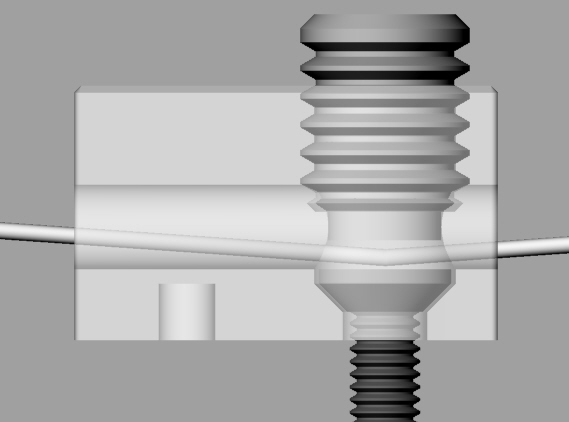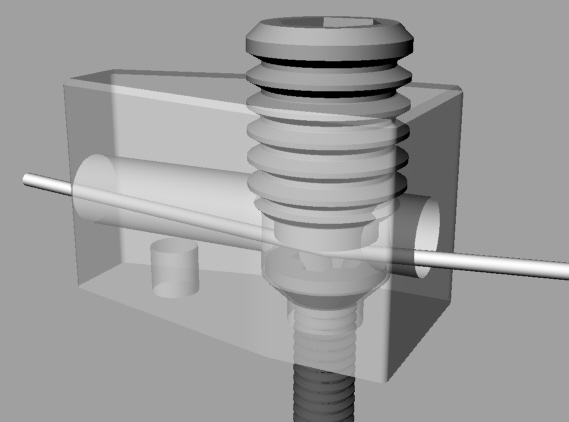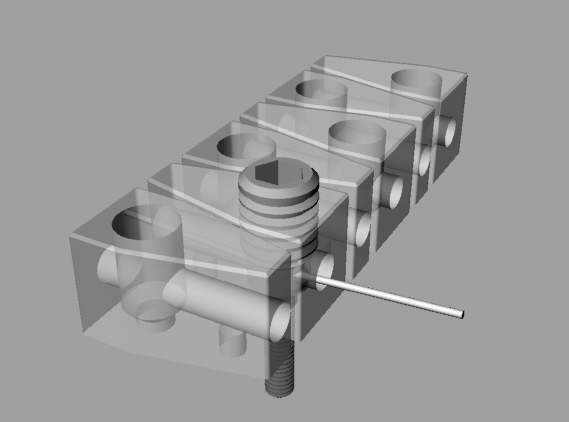I feel that some additional explanation on the string lock is in order. First, the design goals for all hardware that I develop are (not necessarily in order of importance):
- Modular, i.e. ability to build with any number of strings and use compound scale lengths
- Low weight – for ergonomics, but also for efficient energy transfer into the tone wood
- Easy to use
- Easy to manufacture, including minimizing the number of parts that need to be manufactured especially
- Durability
- A minimum of energy transfer points, i.e. strive for direct contact with the wood
- Aesthetically pleasing
Not all goals can be met in every design of course, but they are at least goals.
In this design, the modularity is apparent. In addition to being able to use it with any number of strings, you may also choose whatever string spacing is suitable. Low weight comes from using extremely hard and durable 7075 aluminum. Ease of use is not optimal – I would prefer a solution that did not require a tool. Nevertheless, allen keys are part of most guitarists’ arsenal and widely accepted. This design is not the easiest to manufacture, but with the right machinery it can be done with no more manual operations than any at the face of it simpler designs. It consists of only one manufactured part. The rest are purchased off the shelf components. Aluminium is not the most durable material. For that reason, the mounting screw in this design has dual purposes. The head of the screw (which is made from hardened steel) acts as the resting surface for the string. The string is pressed towards it by a “dog-point” screw. Both of these parts are more durable than the aluminium itself, and what’s better is that they can be replaced if they ever get worn.

The picture above shows a metal screw, whereas in reality, the string lock would normally be mounted directly on the wood. It is possible, however, to create a metal plate specifically for the number of strings and mounting geometry required and then fasten the string locks to this plate and fasten the plate in the guitar.

Another image at an angle.
As for the last point – beauty is obviously in the eye of the beholder. But, I think it will look good in most designs. What do you think?




